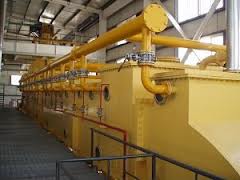In Europe people know them as Soya beans, in America, it is different, and people know them as Soybeans. It is in the class of oil seeds, it produces so much protein per acre. The leading nations in production of the soybeans are United States of America, China, Argentina, India and Brazil.
 The soybean seed has nineteen percent oil. It also contains thirty-five percent proteins, and their commercial viability has made some people start soybean crushing industries. The major products that the crushing industries look for are the soybean crude oil and soybean meal, after the crushing, the oil undergoes refining and degumming. The refined oil then goes through bleaching, after which temporary hydrogenation is applied on it. The oil then undergoes deodorization. Soybean oil extraction is not complete without the important winterization stage that prevents it from clouding during cold times.
The soybean seed has nineteen percent oil. It also contains thirty-five percent proteins, and their commercial viability has made some people start soybean crushing industries. The major products that the crushing industries look for are the soybean crude oil and soybean meal, after the crushing, the oil undergoes refining and degumming. The refined oil then goes through bleaching, after which temporary hydrogenation is applied on it. The oil then undergoes deodorization. Soybean oil extraction is not complete without the important winterization stage that prevents it from clouding during cold times.
The winterization stage also helps in making a diversity of soybean oil products, for example, cooking oil and margarine. The main fats and oils have five classes, edible vegetable oils, animal fats, palm oils, industrial oils and marine oils. Soybean oil is by far the world’s most popular oil put under use than all other plant oils, yet soybeans contain lesser oil than most plant seeds. What makes soybean oil more competitive is the low cost of its production in the industries, the supply of the soybeans is higher than its oil processing, which makes the production cost lower than other plant oils in the industries.
So how is soybean extraction done? It is not an overly complicated process. It requires the best machinery. The most commonly used process is the solvent extraction process. At first the soybean are pressed for the initial production of oil. In addition, the soybean cakes are taken to the solvent chamber where more oil is extracted using the solvent extraction method. The most important thing here is to but the right oil mill especially when you are going into business.
